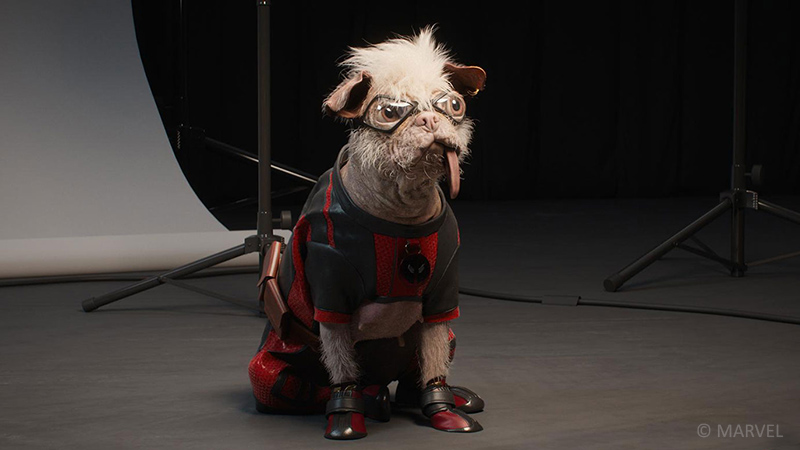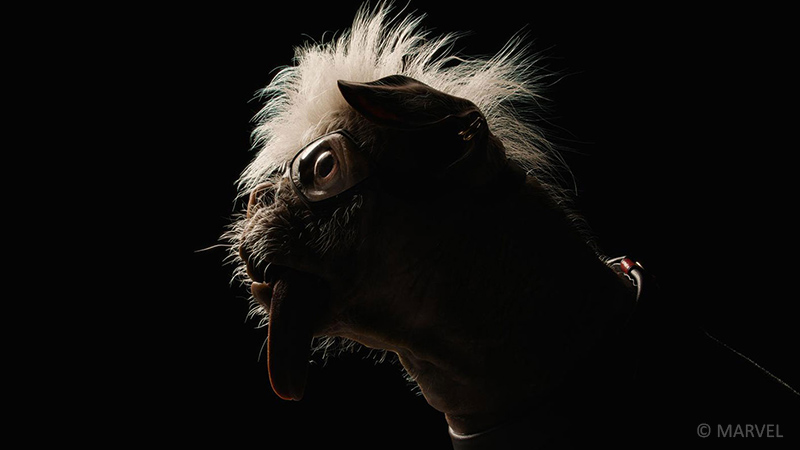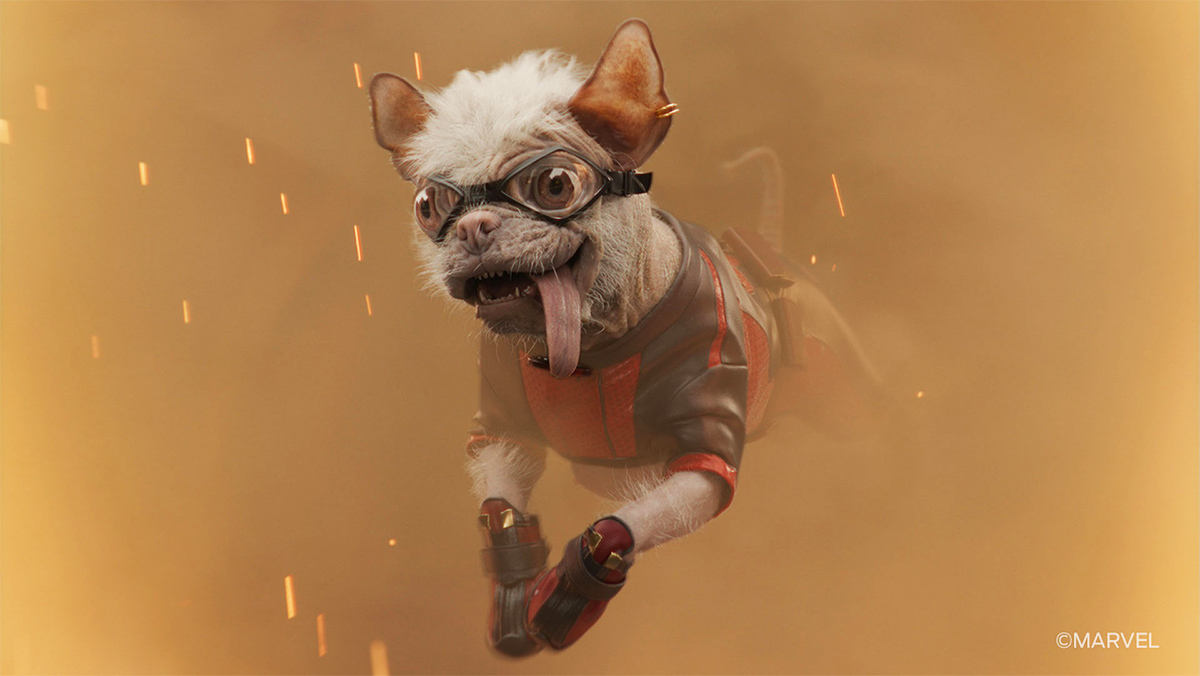Framestore’s work on Deadpool & Wolverine was a global endeavour, taking in pre-production work (previz, techviz and postviz, courtesy of Framestore Pre-production Services) and final VFX courtesy of four separate studios.
The Melbourne team’s mission? Working on fan-favourite Dogpool, one of the film’s most recognizable (and meme-able) stars. Portrayed by Peggy – officially “Britain’s ugliest dog” – the work presented some unique animation challenges since a number of shots required CG-enhanced eyes, despite most shots being practical. The team, led by VFX Supervisor João Sita, was charged with replacing and animating the eyes while seamlessly blending CG elements in order to magnify them in live-action plates.
Framestore’s London team developed the CG asset for Dogpool, focusing on creating photorealistic, yet comically exaggerated, eyes. The CG DogPool was then transferred to Melbourne, for integration. Along with animating Dogpool’s trademark bulging eyes, the team added quirky CG elements, including thick goggles, eyes and an earring that matched Nicepool’s.
Using human eyes as references, the team refined Dogpool’s iris, pupils, reflections, and meniscus to enhance the range of emotions. The eye animation was adjusted shot by shot, based on the scene, dialogue, and actions Dogpool performed. This meticulous work included beauty lighting, reflections, and adjusting eye visibility through the visor.
One of the main challenges was achieving the refraction effect with the ‘goggly’ look of Dogpool’s eyes without too much distortion. “The animation team delivered a believable and engaging performance by iterating on the eyes before adding the goggles,” says Sita. “We then rendered the scenes to make sure the magnification effect matched the animation and that the eyes were directed correctly. Maintaining the readability of the eyes while adjusting the whites and the wet look was crucial for emotional engagement and the overall performance.”
The team also rendered multiple passes of the eye in lighting, allowing compositing to adjust the eyes’ shape and balance the refraction. “Compositing was crucial in fine-tuning our animation and integrating the elements in a grounded way. Although the eyes’ performance can be a bit comical, it never detracts from looking realistic.”


+61 3 9251 1888
